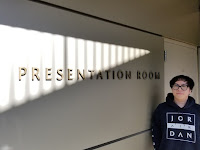Event 3: Hox Zodiac

We are all different in shape, size, and DNA. However there is an underlying commonality that define body structure. This information is in a set of genes that is called Hox genes. All the living creatures have the Hox genes and the Chinese Zodiac is used as framework, therefore, we can relate ourselves to animals. The Hox Zodiac Wheel http://hoxzodiac.com/wheel/animals.html Since I was born in 1996, my animal is the Rat. Yin-Yang simply represent dark-bright, negative-positive, female-male. I am glad that I am a male and I have bright, positive characteristics. My organ is gallbladder, so that the rats can rule the gallbladder, which is a small organ where bile is stored until it is used in the small intestine. This reminded me of Week 6 topic, Biotech + Art. Rats are the most widely used animal to test and research. There is no doubt that rats have contributed to the Biology and Neuroscience. Rats are always used in any experiment that is to improve the medicine, healing, an...




